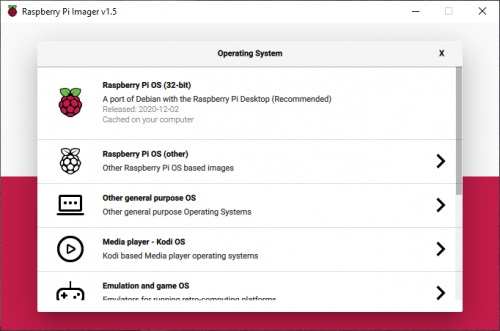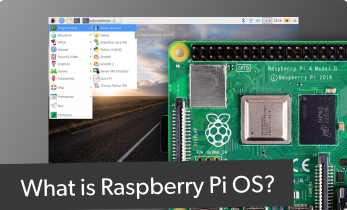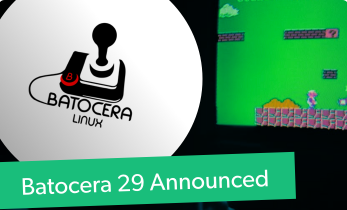Raspberry Pi OS, Imager Updates - Chromium version 84, PulseAudio, and More
When the Raspberry Pi first came out it proved revolutionary in the maker and home computing spaces. The credit-card-sized single-board computer (SBC) fused a small form factor with an equally tiny price tag. And with each subsequent iteration, the Raspberry Pi has become more capable. The flagship Raspberry Pi 4 boasts a system-on-a-chip (SoC) capable of handling everyday desktop use ranging from web browsing to audio or even photo and video editing. Plus, its up to 8GB of LPDDR4 means more, faster RAM graces the Pi 4. But hardware is only as capable as the software it supports, and the Raspberry Pi Foundation continues to offer new features to Raspberry Pi OS (the distro formerly-known as Raspbian) as well as its OS imager. Learn about the latest Raspberry Pi OS and imager updates!
Raspberry Pi OS Update - Chromium version 84, PulseAudio, Printer Support, and More
There are tons of Raspberry Pi-compatible Linux and non-Linux operating systems. But one of the best and most popular is Raspberry Pi OS (formerly Raspbian). Raspberry Pi OS received a major December 2020 update with plenty of new features.
The Chromium web browser got bumped up to version 84. With it, Chromium v84 brings a slew of quality-of-life changes including improved YouTube video playback. What's more, Chromium 84 plays nicely with many video conferencing platforms such as Zoom, Google Meet, and Microsoft Teams. Since more people are working or studying at home, that makes the Raspberry Pi a great remote work or learning PC.
On the audio side, Raspberry Pi OS has transitioned to the PulseAudio sound server. Since audio handling on Linux can be a bit of a pain, the good folks over at the Raspberry Pi Foundation have graciously included PulseAudio, a convenient software layer that handles audio extremely well. It should be much easier now to switch between different devices such as mics and headsets.
Like audio, printing on Linux can be tricky, particularly if there's no default software installed. Thankfully, Raspberry Pi OS has been updated and now includes CUPS, or Common Unix Printing System. Interestingly, CUPS is owned by Apple, though the software is free for use on Linux distributions. CUPS comes pre-installed in Raspberry Pi OS along with system-config-printer.
The Orca screen reader has been bundled in with Raspberry Pi OS and affords different amenities such as a display magnifier. Therefore, accessibility for those with visual impairments gets an improvement.
Under the Raspberry Pi configuration tab setting, you can select new options such as choosing what a status LED does which proves useful for the Raspberry Pi 400 or Raspberry Pi Zero which both feature a single status LED. And under the performance tab, you can enable or disable a GPIO fan as well as choose the temperature or select the GPIO fan pin.
Overall, the trend is clear: Raspberry Pi OS seeks to become even easier to use and more versatile. Its new quality-of-life additions mean less fiddling with sound settings or messing with printers, headsets, and mics. What with its newfound compatibility with video conferencing apps and printers, the Pi makes a great, affordable little desktop PC for work or school. I even replaced my desktop PC with a Raspberry Pi 4 for a week as my work rig and it ran flawlessly.
Raspberry Pi Imager Update

In addition to Raspberry Pi OS, Raspberry Pi Imager gets an update. While it's easy enough to seek out different operating system images and mount those to a microSD card, the Raspberry Pi OS imager lets you mount that to an SD card, then install operating systems from the imager. New distros are added fairly regularly to the imager including Recalbox which was included recently.
With the new Raspberry Pi OS imager, you'll find a great submenu. Previously, the Raspberry Pi OS imager had a single sub-menu. Now, images can be grouped into different categories. So you can now select different options such as "Media player - Kodi OS," or "Emulation and game OS" to see a list of operating systems for that use case. It's a lot easier to navigate and more streamlined.
Version tracking ensures that you're always using the most up-to-date Raspberry Pi OS imager. Download telemetry keeps logs on the most downloaded Pi OSes, which you can view online. And fresh icons are more aesthetically-pleasing.
December 2020 Raspberry Pi OS and Raspberry Pi Imager Updates - An Onus on Usability
Overall, the Raspberry Pi Foundation has implemented several small but extremely helpful and momentous changes in Raspberry Pi OS and the Raspberry Pi Imager. These tweaks make getting started with the Raspberry Pi even easier, and further hone the Pi as an ultra-affordable, user-friendly desktop. And it's still great for embedded and Internet of Things (IoT) projects too.













































Leave your feedback...